

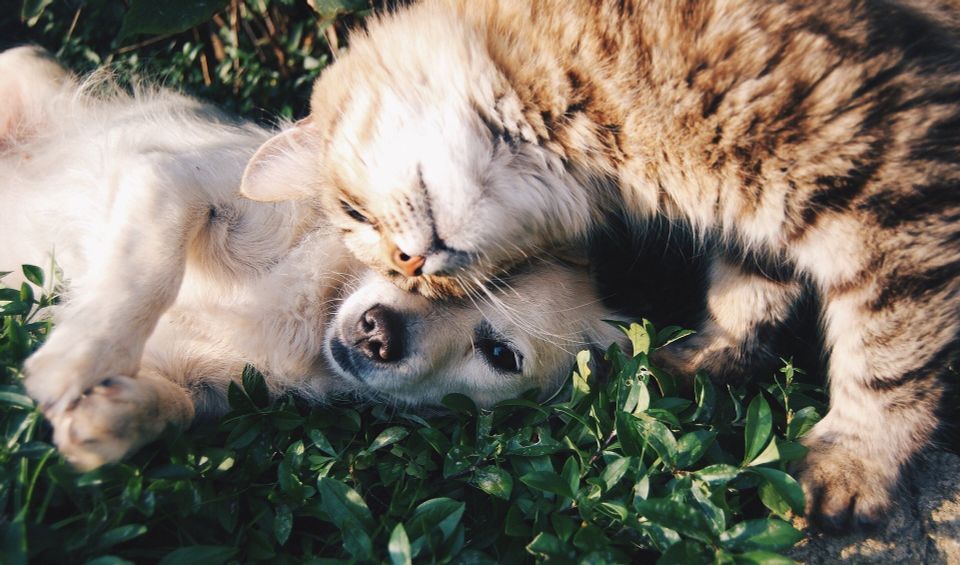
Are You Considering Pet Ownership?
All potential pet owners should to take time to ask these questions before making a decision:
1. Why am I getting a pet?
2. Am I getting it for myself or for someone else?
3. And is that person responsible enough to have a pet?
4. What kind of pet shall I get?
5. Is my house able to comfortably accommodate the pet?
6. How much time will I have to spend with it?
7. Is the pet I am thinking of keeping legal?
8. Does it need a license ? Where do I get the pet from?
9. Do I go to the breeder, the pet shop, the SPCA or shall I just give a stray a home?
2. Am I getting it for myself or for someone else?
3. And is that person responsible enough to have a pet?
4. What kind of pet shall I get?
5. Is my house able to comfortably accommodate the pet?
6. How much time will I have to spend with it?
7. Is the pet I am thinking of keeping legal?
8. Does it need a license ? Where do I get the pet from?
9. Do I go to the breeder, the pet shop, the SPCA or shall I just give a stray a home?
10. How do I select a pet ? Do I know what to look for?
11. Is there an available book that will teach me how to select and care for my intended pet?
12. Will I have time to care for and train my pet?
13. Who will care for it when I am away overseas?
14. How long will the animal live?
15. Will I be able to care for it ALL its life?
16. Can I afford the veterinary fees when it needs treatment?
11. Is there an available book that will teach me how to select and care for my intended pet?
12. Will I have time to care for and train my pet?
13. Who will care for it when I am away overseas?
14. How long will the animal live?
15. Will I be able to care for it ALL its life?
16. Can I afford the veterinary fees when it needs treatment?

Your Child's First Pet
Caring for a pet is a wonderful way for children to learn what it means to be responsible for another living creature. As a parent, the best way to ensure that the experience will be a positive one for your child is by choosing the pet that is most likely to thrive in your home.
Some factors to consider include the amount of space the pet will be able to comfortably inhabit; how much time you will have to supervise your child's care of the pet; the level of resources at your disposal to buy pet habitats, food and other supplies; and, perhaps most important, whether the pet can be expected to interact warmly with your child.
After all, when a child feels a strong connection with a pet, he or she is more likely to care for it with compassion and diligence. When your child expresses interest in having a pet, you'll be glad that you have all the information at hand to make an informed decision of what kind of pet to get.
Some factors to consider include the amount of space the pet will be able to comfortably inhabit; how much time you will have to supervise your child's care of the pet; the level of resources at your disposal to buy pet habitats, food and other supplies; and, perhaps most important, whether the pet can be expected to interact warmly with your child.
After all, when a child feels a strong connection with a pet, he or she is more likely to care for it with compassion and diligence. When your child expresses interest in having a pet, you'll be glad that you have all the information at hand to make an informed decision of what kind of pet to get.
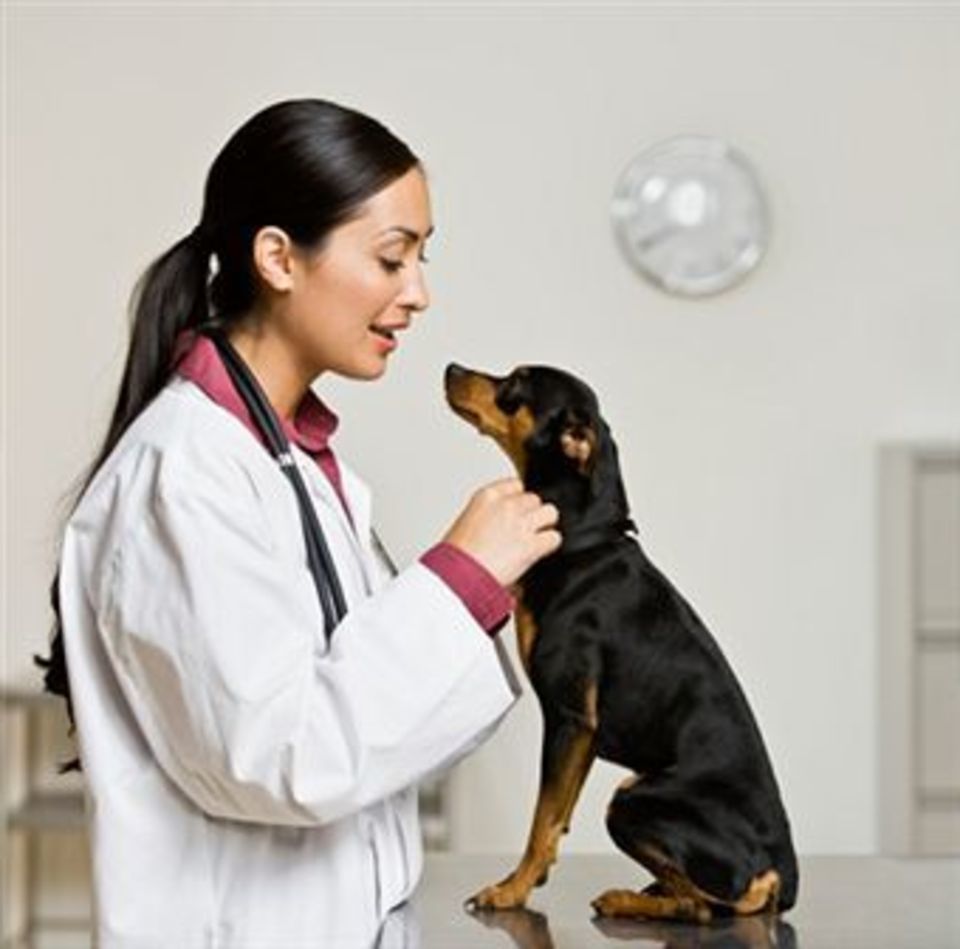
Veterinary Care
Your animal companion wants to be a "healthy" pet pal into the new millennium which means annual check ups with a veterinarian. To avoid illnesses and prevent diseases, your pet should receive yearly vaccinations. These shots stop pets from getting diseases such as Distemper, which attacks the nervous system, Rabies, Parvovirus and Coronavirus, which affect the intestines; and cats from getting diseases such as Viral Rhinotracheitis, which is a highly contagious respiratory disease, Rabies, Panleukopenia, which is also known as feline distemper, and Feline Leukemia Virus, which should be given after specific testing. It is also very important that we receive regular flea and tick treatments to control parasites, which can lead to Lyme disease and Anemia.

Allergies in Our Pet Friends
Why do so many dogs and cats scratch, bite, and chew themselves? The common reason is allergies.
Allergic reactions in people usually result in "hay-fever" symptoms: runny nose, red eyes, and sneezing; and if we have food allergies, we may have an upset stomach or swell from eating food that we are sensitive to. Pets get allergies, too. But your pet's reaction to something he or she is allergic to will be more likely to show itself as itchy skin. It is this itch that leads to the chewing and scratching and even sometimes sores which can follow.
What are pets allergic to?
There are three general categories of items that pets are commonly allergic to. These include fleas, food, and inhalants. We all know that flea bites itch. But if your pet is allergic to the flea saliva, he or she can have a really BIG itch from just one or two flea bites. Lots of food items can cause allergies. Unfortunately, many of these same food components are part of pet food. Pets can develop allergies to corn or beef in a manner similar to people and peanuts or shrimp. But instead of swelling, they ITCH. Inhalant allergens like pollen and house dust can also cause the uncontrollable itching. Sometimes it seems like nothing can help.
So what can you do?
Well, for really bad cases you will likely need the help of your local vet. She or he can prescribe medication to stop the itch and antibiotics to help heal wounds if your pet got carried away. For follow up you will likely be instructed on ways to avoid whatever it is that your pet is allergic to. Some pets are so bad that they need an allergy shot (just like people) to desensitize them to the things that make them itch.
There are a few steps that you can take which may help to prevent a visit to the vet. Flea allergies can be a real problem even if a pet has very few fleas. Even indoor pets get fleas - These super pests can jump through doors and windows; they can come in on other pets; or they can even hitch a ride on you. Flea control is essential to limiting these types of allergies. All pets, inside and out, should have a good flea control program. Lots of advances have been made in this area over the past few years. Flea collars are no longer the best bet. Now there are numerous spot-on products which you can give once a month to control fleas. Of course, this is in addition to the old standbys of sprays, powders, and dips. All of these products can have side effects. So use them carefully and follow directions.
Food allergies are a little bit harder because it helps to know what your pet is allergic to. This type of evaluation usually requires a visit to the vet, and hypoallergenic diets are usually recommended. These diets are made of a few simple ingredients. They are based on diet components that are not part of standard dog food. Remember, if your dog is on a hypoallergenic diet, treats must comply, and toys should be selected to not interfere with the dietary restrictions.
House dust and pollens are known as "respiratory allergens" - You react when you (or your pet) breathe them in. These cannot be eliminated, but steps as simple as keeping pets inside can reduce exposure when pollen counts are high. Inside, regular dusting and changing ventilation filters are helpful for both you and your pet.
We may not be able to cure allergies in our pets, but a few simple changes in how we treat them can make all the difference!
Allergic reactions in people usually result in "hay-fever" symptoms: runny nose, red eyes, and sneezing; and if we have food allergies, we may have an upset stomach or swell from eating food that we are sensitive to. Pets get allergies, too. But your pet's reaction to something he or she is allergic to will be more likely to show itself as itchy skin. It is this itch that leads to the chewing and scratching and even sometimes sores which can follow.
What are pets allergic to?
There are three general categories of items that pets are commonly allergic to. These include fleas, food, and inhalants. We all know that flea bites itch. But if your pet is allergic to the flea saliva, he or she can have a really BIG itch from just one or two flea bites. Lots of food items can cause allergies. Unfortunately, many of these same food components are part of pet food. Pets can develop allergies to corn or beef in a manner similar to people and peanuts or shrimp. But instead of swelling, they ITCH. Inhalant allergens like pollen and house dust can also cause the uncontrollable itching. Sometimes it seems like nothing can help.
So what can you do?
Well, for really bad cases you will likely need the help of your local vet. She or he can prescribe medication to stop the itch and antibiotics to help heal wounds if your pet got carried away. For follow up you will likely be instructed on ways to avoid whatever it is that your pet is allergic to. Some pets are so bad that they need an allergy shot (just like people) to desensitize them to the things that make them itch.
There are a few steps that you can take which may help to prevent a visit to the vet. Flea allergies can be a real problem even if a pet has very few fleas. Even indoor pets get fleas - These super pests can jump through doors and windows; they can come in on other pets; or they can even hitch a ride on you. Flea control is essential to limiting these types of allergies. All pets, inside and out, should have a good flea control program. Lots of advances have been made in this area over the past few years. Flea collars are no longer the best bet. Now there are numerous spot-on products which you can give once a month to control fleas. Of course, this is in addition to the old standbys of sprays, powders, and dips. All of these products can have side effects. So use them carefully and follow directions.
Food allergies are a little bit harder because it helps to know what your pet is allergic to. This type of evaluation usually requires a visit to the vet, and hypoallergenic diets are usually recommended. These diets are made of a few simple ingredients. They are based on diet components that are not part of standard dog food. Remember, if your dog is on a hypoallergenic diet, treats must comply, and toys should be selected to not interfere with the dietary restrictions.
House dust and pollens are known as "respiratory allergens" - You react when you (or your pet) breathe them in. These cannot be eliminated, but steps as simple as keeping pets inside can reduce exposure when pollen counts are high. Inside, regular dusting and changing ventilation filters are helpful for both you and your pet.
We may not be able to cure allergies in our pets, but a few simple changes in how we treat them can make all the difference!
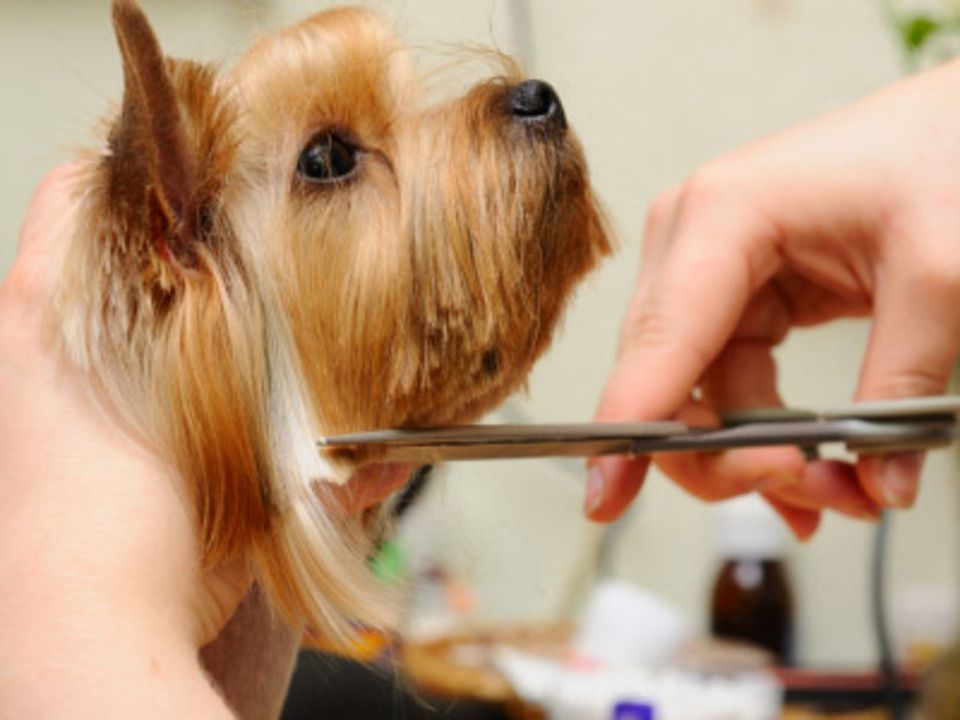
Good Grooming
When we look good, we feel good, and grooming does both for us. Depending upon our coat and breed, we should be given a full-service groom every six to eight weeks. Groomers are our friends because in addition to brushing, bathing and giving us a haircut, they also clean our ears and care for our skin. Ear care is often overlooked, but it is an important area because dirt and debris in the ear canal can lead to inflammation and infection. Also, Groomers are able to let you know when we suffer from sore, irritated skin and have hotspots caused by allergic reactions, or skin and fungal diseases that can produce hair loss, or other minor cuts, burns and wounds. With a good groom, we'll really be able to strut our stuff!
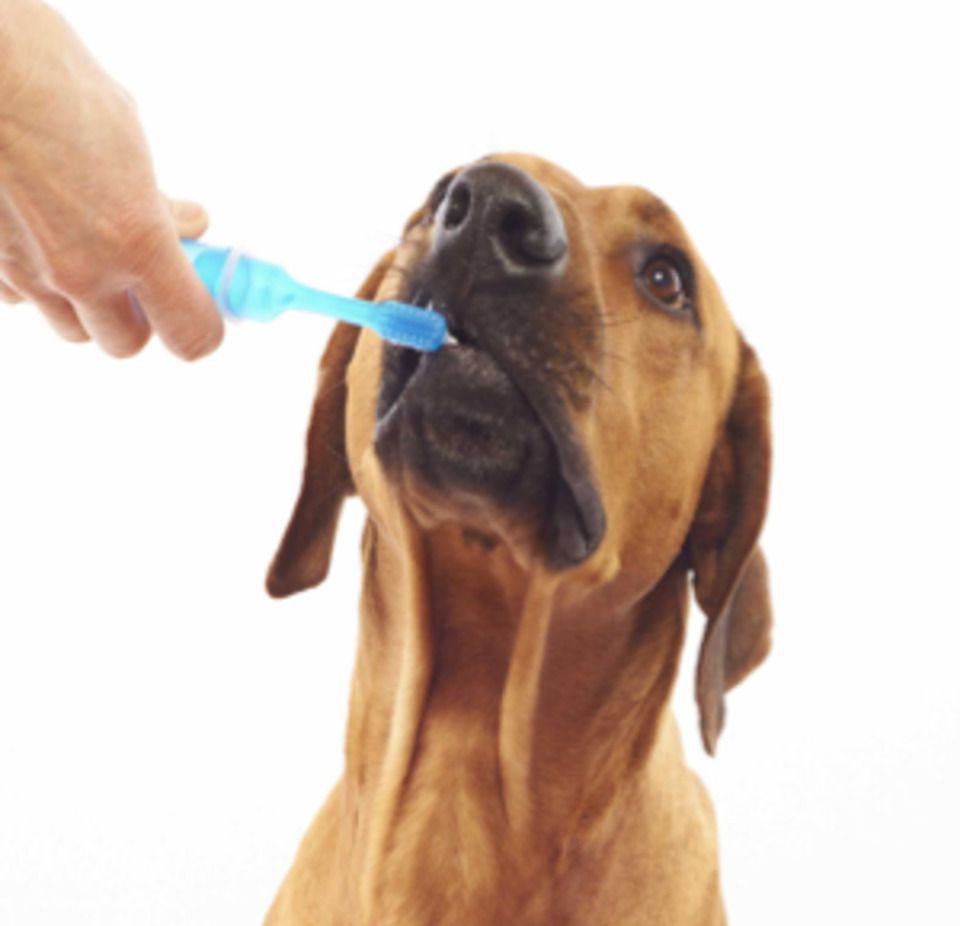
Dental Care and Toothbrushing
Imagine how your own teeth and mouth would feel if you never brushed your teeth or visited a dentist. Dry food and chew toys help clean some of our teeth, but they don't clean teeth at the gum line where most dental problems begin. Buildup of tartar can cause inflamed, swollen gums and secondary infection that can lead to serious health problems. In animals, as in humans, routine dental care is essential. Toothbrushing is the most effective method of cleaning our teeth at home. The cleaning action of the bristles along the gum line is critical in maintaining the health of our teeth and gums. Dogs and cats, one to three years old, should have their teeth brushed once a week, and those over three should have their teeth brushed three times a week.
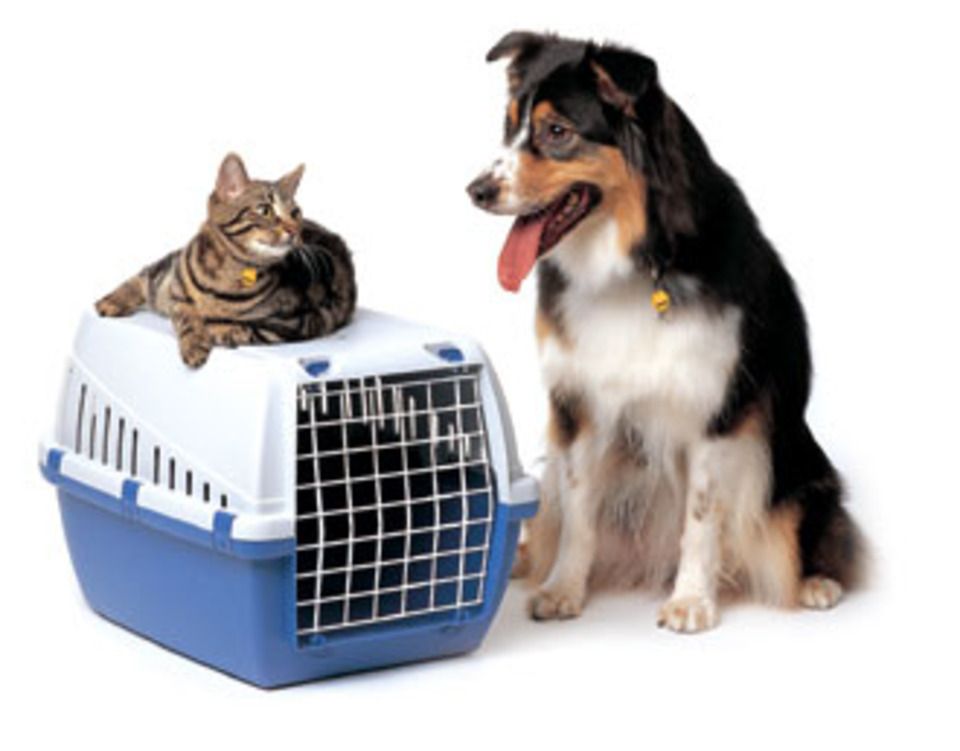
Traveling With Pets
For many pet owners, planning a vacation means making a difficult and emotional decision: Do you leave your pet behind or take it along? Since so many people can't bear the thought of their animals spending a week or more locked inside a kennel or alone in the house with only the occasional visit by a babysitter, more and more owners are choosing to take their pets along for the trip.
• Air travel - No pet that is very old or very young (younger than eight weeks) should travel on an airplane. When making travel plans, be sure to check the airline's policy on transporting animals before buying tickets; each airline has different regulations, and some don't accommodate animals at all. Check-in time for passengers carrying pets may be earlier than for others and you may need to carry a health certificate from your veterinarian verifying that your pet has had all required inoculations. If you are traveling internationally, find out in advance if there are quarantine regulations at your destination- either the airline or consulate for the country you are visiting can provide you with this information.
If your pet is a small dog (under ten pounds), cat or ferret, you may be able to take it on board the airplane with you in a carrying case. This is the best and least traumatizing way to fly with a pet. Again, check with the airline for its specific policies on carrying pets on board. Pet carriers cannot measure more than eight inches high as they must be able to fit under the seat in front of you. If your pet is larger, it will have to travel in the plane's baggage compartment. It's very important to buy a crate made specifically for this purpose: It should be sturdy, have a door that locks and have enough room inside for your pet to move around. There should be ventilation on all sides of the crate so that air can circulate even if it is pushed up against a wall. Put plenty of shredded newspaper in the bottom of the crate, but no blankets or towels, as these will get bunched up by a nervous animal and can keep it from getting a firm footing on the bottom of the container. Attach a water bottle on the outside of the container so that airline personnel can refill it without opening the cage in case of unexpected delays. Be sure to mark the cage on all sides with the words "Live Animal" and arrows indicating the upright position. It's even a good idea to label the cage with a photo of your pet, along with his name, your name and your contact information (of course, this information should also be on the pet's collar). This not only helps identify the animal in case of a mix-up, but it may also encourage handlers to take a more gentle and caring approach to your pet.
Unless your vet specifically recommends it, tranquilizing your pet for travel is not advisable. We feel that an animal is better off in an unfamiliar situation if it has all of it's faculties about it and can balance and maintain equilibrium when being moved about. In addition, the increased altitude can create respiratory and cardiovascular difficulties in some sedated animals, so it's best to avoid this practice. Be aware also that some pug-nosed dogs and cats will have difficulty breathing at high altitudes, so always check with your vet before flying. Finally, allow your pets some time to get used to its crate or carrying case before the trip- try putting it inside for up to a couple of hours a day for a week or before traveling.
• Car travel- Nearly all pet owners take their pets with them in the car at some point- whether its for the occasional visit to the vet or for a long car trip. Allowing an animal to ride unrestrained is tempting, but not advisable- if you stop short it could be disastrous for your pet. A better option is to put a harness on your pet, and attach the harness to a seat belt. Harnesses are made for animals of all sizes- from large dogs to ferrets- and are a good choice for a short trip because the animal has some freedom of movement but is still secure. For a longer trip, a crate is a better solution. There are models available with food and water containers built-in, and, for cats and ferrets, small, corner-shaped litter boxes. The crate can be secured to a seat with a seat belt.
Good air circulation is essential for pets in the car, but since you don't want your dog riding with its head out the window, you might consider installing a car-window vent guard that allows air in but physically blocks the opening. Never leave your pet unattended in a car even with windows cracked- especially if the day is warm. Even on a seemingly mild day, with temperatures in the 70s for example, heat can build up in the car and harm or even kill your pet. Ferrets, especially, cannot tolerate temperatures above 75 degrees.
Always make sure your pet is wearing proper identification and that you travel with an updated copy of his medical records. Keep in mind that ferrets are banned in some places, including California, Hawaii, New York City and Washington D.C., and if you're traveling to these places, you'll need proof that the animal belongs to you, as well as evidence of your current address and your pet's health.
If your pet is sick, very young or old, or high-strung, it's best to avoid travels altogether- both you and your pet will be happier if you leave it in the care of a friend or reliable boarding facility.
• Air travel - No pet that is very old or very young (younger than eight weeks) should travel on an airplane. When making travel plans, be sure to check the airline's policy on transporting animals before buying tickets; each airline has different regulations, and some don't accommodate animals at all. Check-in time for passengers carrying pets may be earlier than for others and you may need to carry a health certificate from your veterinarian verifying that your pet has had all required inoculations. If you are traveling internationally, find out in advance if there are quarantine regulations at your destination- either the airline or consulate for the country you are visiting can provide you with this information.
If your pet is a small dog (under ten pounds), cat or ferret, you may be able to take it on board the airplane with you in a carrying case. This is the best and least traumatizing way to fly with a pet. Again, check with the airline for its specific policies on carrying pets on board. Pet carriers cannot measure more than eight inches high as they must be able to fit under the seat in front of you. If your pet is larger, it will have to travel in the plane's baggage compartment. It's very important to buy a crate made specifically for this purpose: It should be sturdy, have a door that locks and have enough room inside for your pet to move around. There should be ventilation on all sides of the crate so that air can circulate even if it is pushed up against a wall. Put plenty of shredded newspaper in the bottom of the crate, but no blankets or towels, as these will get bunched up by a nervous animal and can keep it from getting a firm footing on the bottom of the container. Attach a water bottle on the outside of the container so that airline personnel can refill it without opening the cage in case of unexpected delays. Be sure to mark the cage on all sides with the words "Live Animal" and arrows indicating the upright position. It's even a good idea to label the cage with a photo of your pet, along with his name, your name and your contact information (of course, this information should also be on the pet's collar). This not only helps identify the animal in case of a mix-up, but it may also encourage handlers to take a more gentle and caring approach to your pet.
Unless your vet specifically recommends it, tranquilizing your pet for travel is not advisable. We feel that an animal is better off in an unfamiliar situation if it has all of it's faculties about it and can balance and maintain equilibrium when being moved about. In addition, the increased altitude can create respiratory and cardiovascular difficulties in some sedated animals, so it's best to avoid this practice. Be aware also that some pug-nosed dogs and cats will have difficulty breathing at high altitudes, so always check with your vet before flying. Finally, allow your pets some time to get used to its crate or carrying case before the trip- try putting it inside for up to a couple of hours a day for a week or before traveling.
• Car travel- Nearly all pet owners take their pets with them in the car at some point- whether its for the occasional visit to the vet or for a long car trip. Allowing an animal to ride unrestrained is tempting, but not advisable- if you stop short it could be disastrous for your pet. A better option is to put a harness on your pet, and attach the harness to a seat belt. Harnesses are made for animals of all sizes- from large dogs to ferrets- and are a good choice for a short trip because the animal has some freedom of movement but is still secure. For a longer trip, a crate is a better solution. There are models available with food and water containers built-in, and, for cats and ferrets, small, corner-shaped litter boxes. The crate can be secured to a seat with a seat belt.
Good air circulation is essential for pets in the car, but since you don't want your dog riding with its head out the window, you might consider installing a car-window vent guard that allows air in but physically blocks the opening. Never leave your pet unattended in a car even with windows cracked- especially if the day is warm. Even on a seemingly mild day, with temperatures in the 70s for example, heat can build up in the car and harm or even kill your pet. Ferrets, especially, cannot tolerate temperatures above 75 degrees.
Always make sure your pet is wearing proper identification and that you travel with an updated copy of his medical records. Keep in mind that ferrets are banned in some places, including California, Hawaii, New York City and Washington D.C., and if you're traveling to these places, you'll need proof that the animal belongs to you, as well as evidence of your current address and your pet's health.
If your pet is sick, very young or old, or high-strung, it's best to avoid travels altogether- both you and your pet will be happier if you leave it in the care of a friend or reliable boarding facility.

Indoors/Outdoors for Your Pet
Even if your pet is an indoor creature by nature (or nurture), it's more than likely that it will enjoy a foray into the great outdoors every now and then. Most indoor pets will revel in an occasional dose of fresh air and sunshine. Here are some precautions you should follow when taking indoor pets out into the exciting new environment of your backyard.
You can buy harnesses especially designed for rabbits, cats or ferrets, although a harness may take a little getting used to at first. To keep your pet from panicking, try on the harness without the leash for a while when it is still indoors. Once your pet is habituated to the harness, attach the leash and let the animal make its own way freely about the house, so that it's dragging the leash behind itself without any intervention from you. Then, practice walking with your pet for no more than five minutes at a time. Once the pet feels comfortable with both the leash and the harness, try taking it outside for a few minutes at a time.
If you prefer not to harness a cat and just want to hold it in your arms, make sure its nails are trimmed in case it has a panic attack and tries to scratch you. You can also train your cat to walk on a leash. Ferrets, however, have to be trained to walk forward. To do this, you'll need to make a target stick- a stick with a plastic spoon attached. Place your ferret's favorite food on the spoon and guide it forward, holding it in front of the ferret as you walk along. Marc gives his ferret a treat called Ferretvite, which is a sticky substance made of malt with lots of vitamins in it. Most ferrets like ambling about, although some are more sensitive than others to loud noises, traffic or people. If your ferret frightens easily, pick it up and take it home. You can also buy a special pouch for carrying a ferret outdoors. This pouch is useful for carrying a small dog or cat as well. Like ferrets, rabbits love to roam about outside, exploring new environments, but you'll have to follow your rabbits whim, since you won't be able to teach it to walk in any particular direction.
Never take a pet bird outside unless its wings have been trimmed or you've got it in a cage. Trimming the wings is done by clipping the first eight feathers- the primary flight feathers- at the covert. This procedure can be quite upsetting to your bird, and it's crucial that you do it correctly, so it's best that you take your bird to your veterinarian the first time its wings need to be clipped, so she can demonstrate the proper technique for you. If you've been informed exactly what to do and you still don't feel comfortable with this process, get your bird's wings clipped professionally.
Remember, be very careful when bringing your indoor pet outside under the hot sun. Pets need shade. A day at the beach can be dangerous for your pet if you don't have an umbrella or some other means of protecting it from the sun.
You can buy harnesses especially designed for rabbits, cats or ferrets, although a harness may take a little getting used to at first. To keep your pet from panicking, try on the harness without the leash for a while when it is still indoors. Once your pet is habituated to the harness, attach the leash and let the animal make its own way freely about the house, so that it's dragging the leash behind itself without any intervention from you. Then, practice walking with your pet for no more than five minutes at a time. Once the pet feels comfortable with both the leash and the harness, try taking it outside for a few minutes at a time.
If you prefer not to harness a cat and just want to hold it in your arms, make sure its nails are trimmed in case it has a panic attack and tries to scratch you. You can also train your cat to walk on a leash. Ferrets, however, have to be trained to walk forward. To do this, you'll need to make a target stick- a stick with a plastic spoon attached. Place your ferret's favorite food on the spoon and guide it forward, holding it in front of the ferret as you walk along. Marc gives his ferret a treat called Ferretvite, which is a sticky substance made of malt with lots of vitamins in it. Most ferrets like ambling about, although some are more sensitive than others to loud noises, traffic or people. If your ferret frightens easily, pick it up and take it home. You can also buy a special pouch for carrying a ferret outdoors. This pouch is useful for carrying a small dog or cat as well. Like ferrets, rabbits love to roam about outside, exploring new environments, but you'll have to follow your rabbits whim, since you won't be able to teach it to walk in any particular direction.
Never take a pet bird outside unless its wings have been trimmed or you've got it in a cage. Trimming the wings is done by clipping the first eight feathers- the primary flight feathers- at the covert. This procedure can be quite upsetting to your bird, and it's crucial that you do it correctly, so it's best that you take your bird to your veterinarian the first time its wings need to be clipped, so she can demonstrate the proper technique for you. If you've been informed exactly what to do and you still don't feel comfortable with this process, get your bird's wings clipped professionally.
Remember, be very careful when bringing your indoor pet outside under the hot sun. Pets need shade. A day at the beach can be dangerous for your pet if you don't have an umbrella or some other means of protecting it from the sun.
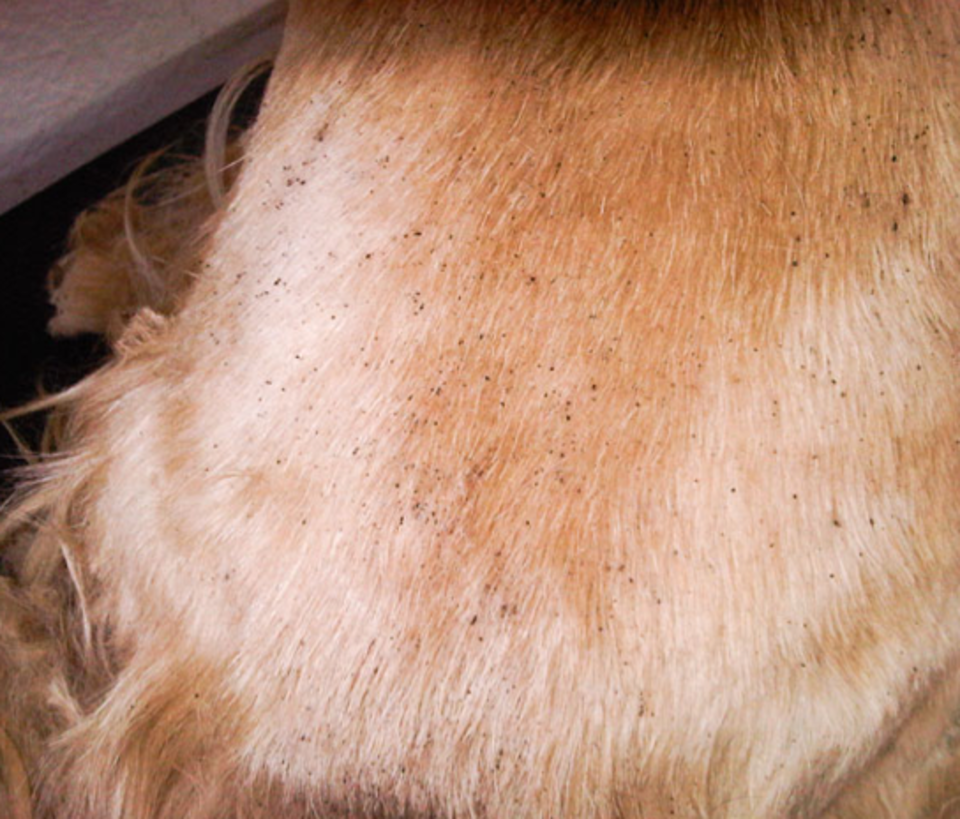
Eradicating Fleas and Ticks
If you've ever watched your pet contort its body and scratch incessantly, you probably know that fleas are an uncomfortable affliction. You may also know that momentary feeling of panic when your pet returns from a romp in the woods with a tick buried in its fur. The first step in preventing and treating these pests is to know the enemy.
Both fleas and ticks feed off mammals by injecting coagulants and sucking out body fluids. Fleas are perhaps the most common pet nuisance. There are more than two hundred species in this country, but the major troublemaker for pets is the cat flea, which is happy to feed on dogs, cats or anything else with fur. The fur provides a warm camouflage as the breeding ground. The main problem with fleas, itching, is due not only to their bites, but also to their crawling over the skin. Some pets are extremely allergic to flea bites. In these pets, fleas may cause a rash, inflammation and hair loss. In response, cats may compulsively over groom.
To effectively kill fleas and prevent further infestations, you need to be sure your applying effective treatments properly and at the correct intervals. Not all animals can tolerate the same kind of treatment, so be sure to always use treatments meant specifically for your pet. Finally, you'll also need to treat the environment- it does little good to treat a dog or cat for fleas if it then returns to a flea-infested house or backyard.
Shampoos and sprays that contain pyrethrums, which are derived from chrysanthemums, are effective for dogs, cats, ferrets, rabbits and other small pets. When applying sprays to a pet, you must rub the spray through the pets fur with your hands so it gets to the animal's skin. Spray some into your hands and work it into the fur on your pet's face and head, since pets dislike being sprayed on those areas.
You must treat the environment too. You must wash the pet's bedding regularly and vacuum frequently to help keep the flea population down. The vacuum bag should be changed after vacuuming and the used one burned, if possible, to prevent it from serving as a flea incubator (check your local regulations before burning garbage). Vacuum your rugs as often as possible. Use carpet spray as needed, since fleas will breed in carpets. Keep you pet out of brushy areas.
Your veterinarian offers a range of good flea controls: The first is a brand known as Program, which is a pill that you give to your pet once a month. This treatment interrupts the flea's life cycle. Upon biting the pet, the female flea ingests a poison that stops her eggs from developing and renders the flea sterile; when it jumps off your pet, it will not be able to breed in your house. A product known as Top-Spot is a chemical that you put on your pet's skin; it is absorbed into the pet's skin, but not the blood stream and fleas are killed as they touch your pet's skin. The treatment known as Advantage is quite effective for dogs that do not swim. A similar product, Frontline, is not water-soluble, so it can be used on animals that go in the water.
Ticks are not insects, like fleas, but are arachnids, like mites, spiders and scorpions. The United States has about two hundred tick species. Habitats include woods, beach grass, lawns, forests and even urban areas. A tick has a one-piece body. The harpoon like barbs of its mouth attach to a host for feeding. Crab like legs and a sticky secretion help hold the tick to the host. When attempting to remove a tick, to prevent the mouth part from coming off and remaining embedded in the skin, grasp the mouth close to the skin with tweezers and pull gently.
Ticks may carry various infectious organisms that can transmit diseases to cats and dogs, including the following:
• Babesiosis, which results in lethargy, appetite loss, weakness and pale gums.
• Ehrlichiosis, which produces high fever and muscle aches.
• Lyme disease, whose symptoms include lameness, swollen joints, fever, poor appetite, fatigue and vomiting (some infected animals, however, show no symptoms).
• Tick paralysis in dogs, which results in gradual paralysis, seen first as an unsteady gait from uncoordinated back legs (some infected animals, however, don't develop paralysis).
To combat ticks, mow your lawn regularly, since ticks can attach to animals from the grass, and examine your pet daily. When you find a tick, remove it quickly. Always use tick treatments intended specifically for a dog or a cat. Cats are especially sensitive to such treatments, and a treatment designed for dogs might be too strong.
Left uncontrolled, fleas and ticks can infest not just your cat or dog, but your entire house. Take the necessary precautions and you and your pet will enjoy the warm months ahead pest free.
Both fleas and ticks feed off mammals by injecting coagulants and sucking out body fluids. Fleas are perhaps the most common pet nuisance. There are more than two hundred species in this country, but the major troublemaker for pets is the cat flea, which is happy to feed on dogs, cats or anything else with fur. The fur provides a warm camouflage as the breeding ground. The main problem with fleas, itching, is due not only to their bites, but also to their crawling over the skin. Some pets are extremely allergic to flea bites. In these pets, fleas may cause a rash, inflammation and hair loss. In response, cats may compulsively over groom.
To effectively kill fleas and prevent further infestations, you need to be sure your applying effective treatments properly and at the correct intervals. Not all animals can tolerate the same kind of treatment, so be sure to always use treatments meant specifically for your pet. Finally, you'll also need to treat the environment- it does little good to treat a dog or cat for fleas if it then returns to a flea-infested house or backyard.
Shampoos and sprays that contain pyrethrums, which are derived from chrysanthemums, are effective for dogs, cats, ferrets, rabbits and other small pets. When applying sprays to a pet, you must rub the spray through the pets fur with your hands so it gets to the animal's skin. Spray some into your hands and work it into the fur on your pet's face and head, since pets dislike being sprayed on those areas.
You must treat the environment too. You must wash the pet's bedding regularly and vacuum frequently to help keep the flea population down. The vacuum bag should be changed after vacuuming and the used one burned, if possible, to prevent it from serving as a flea incubator (check your local regulations before burning garbage). Vacuum your rugs as often as possible. Use carpet spray as needed, since fleas will breed in carpets. Keep you pet out of brushy areas.
Your veterinarian offers a range of good flea controls: The first is a brand known as Program, which is a pill that you give to your pet once a month. This treatment interrupts the flea's life cycle. Upon biting the pet, the female flea ingests a poison that stops her eggs from developing and renders the flea sterile; when it jumps off your pet, it will not be able to breed in your house. A product known as Top-Spot is a chemical that you put on your pet's skin; it is absorbed into the pet's skin, but not the blood stream and fleas are killed as they touch your pet's skin. The treatment known as Advantage is quite effective for dogs that do not swim. A similar product, Frontline, is not water-soluble, so it can be used on animals that go in the water.
Ticks are not insects, like fleas, but are arachnids, like mites, spiders and scorpions. The United States has about two hundred tick species. Habitats include woods, beach grass, lawns, forests and even urban areas. A tick has a one-piece body. The harpoon like barbs of its mouth attach to a host for feeding. Crab like legs and a sticky secretion help hold the tick to the host. When attempting to remove a tick, to prevent the mouth part from coming off and remaining embedded in the skin, grasp the mouth close to the skin with tweezers and pull gently.
Ticks may carry various infectious organisms that can transmit diseases to cats and dogs, including the following:
• Babesiosis, which results in lethargy, appetite loss, weakness and pale gums.
• Ehrlichiosis, which produces high fever and muscle aches.
• Lyme disease, whose symptoms include lameness, swollen joints, fever, poor appetite, fatigue and vomiting (some infected animals, however, show no symptoms).
• Tick paralysis in dogs, which results in gradual paralysis, seen first as an unsteady gait from uncoordinated back legs (some infected animals, however, don't develop paralysis).
To combat ticks, mow your lawn regularly, since ticks can attach to animals from the grass, and examine your pet daily. When you find a tick, remove it quickly. Always use tick treatments intended specifically for a dog or a cat. Cats are especially sensitive to such treatments, and a treatment designed for dogs might be too strong.
Left uncontrolled, fleas and ticks can infest not just your cat or dog, but your entire house. Take the necessary precautions and you and your pet will enjoy the warm months ahead pest free.

Prevent Catastrophe - Chocolate is Poison to Pets!
Is just one bite of chocolate bad for my pet? Can it really hurt him or her? Well, yes it could.
Not surprisingly, dogs commonly suffer from chocolate toxicity around Easter, Halloween, Christmas, and Valentine's Day. Chocolate toxicity affects the nervous system and heart of animals (as well as people if we eat enough). There are two things in chocolate that cause toxic effects. These are theobromine and caffeine. Toxicity depends on many factors. One is the concentration of these chemicals in the chocolate. White chocolate has the least; milk chocolate has more; dark chocolate still more; and baking chocolate has most of all. The size of the pet also plays a role. Two ounces of milk chocolate could kill a Chihuahua while most labs will be ok if they sneak a single piece of candy (that is, until their owner finds out).
How can you tell if your pet is suffering from chocolate toxicity? (After all, you can't always store a box high enough to deter a really skilled chocoholic pet.) Signs of toxicity include vomiting, loose stools, restlessness, hyperexcitability, rapid breathing, and seizures. What should you do if your pet does eat chocolate? If you suspect toxicity, get the pet to a vet right away. With special care your pet can bounce back.
The best treatment, however, is prevention. Don't offer chocolates to pets and keep it out of their reach. If you want to share your love with your best friend this Easter, do so with treats designed to keep pets happy and healthy.
Not surprisingly, dogs commonly suffer from chocolate toxicity around Easter, Halloween, Christmas, and Valentine's Day. Chocolate toxicity affects the nervous system and heart of animals (as well as people if we eat enough). There are two things in chocolate that cause toxic effects. These are theobromine and caffeine. Toxicity depends on many factors. One is the concentration of these chemicals in the chocolate. White chocolate has the least; milk chocolate has more; dark chocolate still more; and baking chocolate has most of all. The size of the pet also plays a role. Two ounces of milk chocolate could kill a Chihuahua while most labs will be ok if they sneak a single piece of candy (that is, until their owner finds out).
How can you tell if your pet is suffering from chocolate toxicity? (After all, you can't always store a box high enough to deter a really skilled chocoholic pet.) Signs of toxicity include vomiting, loose stools, restlessness, hyperexcitability, rapid breathing, and seizures. What should you do if your pet does eat chocolate? If you suspect toxicity, get the pet to a vet right away. With special care your pet can bounce back.
The best treatment, however, is prevention. Don't offer chocolates to pets and keep it out of their reach. If you want to share your love with your best friend this Easter, do so with treats designed to keep pets happy and healthy.

Exercising Your Pet
Exercise is good for your pet for the same reasons that it is good for you. Most important, keep your pet on a leash while exercising. This is advisable even in parks where you are allowed to let your pet off the leash. Having your pet on a leash shows that you care for your pet and respect other people and their pets enjoying the same area.
Evaluate your pet's physique before your exercise adventure. While exercising with your pet, continue to evaluate your pet's condition. Your pet will let you know what pace is good. "If your pet or you are out of shape, walk with your pet until you both are ready to pick up the pace. Rest often if your pet seems uncomfortable," says Dr. Berent. Limping, panting excessively, increased salivation, slowing down, or sitting down are all signs that your pet needs a break. It's important to have water or shade to rest in along the way. Or have a hose to cool them down with. That feel's great on a hot summer day if you are wearing a fur coat!
If overheating progresses, pets can get depressed, vomit, seizure and even have brain damage or multi-organ failure. Owners should take a rectal temperature if they suspect a heat stress or a heat stroke. If the temperature is over 106 degrees, get the animal into a tub of cool water and call you veterinarian.
Exercising with your pet is good for you. It's good for them. Walking, running and racing in events like a pet race are great opportunities to continue keeping yourself and your pet in shape for life. For further information about exercising with your pet, contact your local veterinarian.
Evaluate your pet's physique before your exercise adventure. While exercising with your pet, continue to evaluate your pet's condition. Your pet will let you know what pace is good. "If your pet or you are out of shape, walk with your pet until you both are ready to pick up the pace. Rest often if your pet seems uncomfortable," says Dr. Berent. Limping, panting excessively, increased salivation, slowing down, or sitting down are all signs that your pet needs a break. It's important to have water or shade to rest in along the way. Or have a hose to cool them down with. That feel's great on a hot summer day if you are wearing a fur coat!
If overheating progresses, pets can get depressed, vomit, seizure and even have brain damage or multi-organ failure. Owners should take a rectal temperature if they suspect a heat stress or a heat stroke. If the temperature is over 106 degrees, get the animal into a tub of cool water and call you veterinarian.
Exercising with your pet is good for you. It's good for them. Walking, running and racing in events like a pet race are great opportunities to continue keeping yourself and your pet in shape for life. For further information about exercising with your pet, contact your local veterinarian.
Contact Us for Parrot & Pet Availability
Call (516) 764-0717 send us a message using the form below to check on our current availability and prices. We will be happy to answer any questions you may have!
